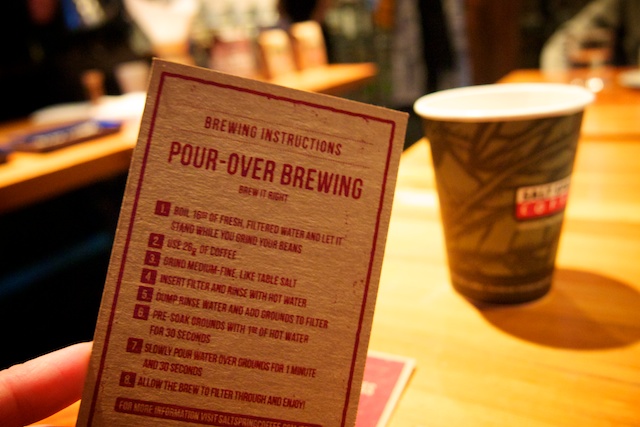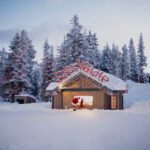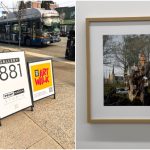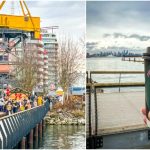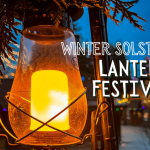Dine Out Vancouver 2013: Edible Canada Speaker Series with Salt Spring Coffee
There are just a few days left to enjoy the delicious deals and experiences that Dine Out Vancouver has to offer including special events like the speaker series at Edible Canada at the market on Granville Island. Throughout the course of the festival, Edible Canada has hosted talks about Asian Inspired Cocktails, Canadian Whiskies, Pork, Foie Gras and Caviar, BC Sake VS the World, BC Brews, and Vintage Wines. I was invited to the Coffee That Rocks event yesterday with Salt Spring Coffee to learn more about beans, roasts, and brewing methods.
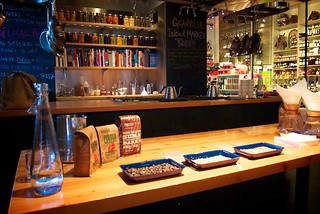 Over the years I have attended wine tastings, beer tastings, and tea tastings but surprisingly enough, this was my first coffee tasting. Sure, I drown back cups of the good stuff each morning but I have never had someone walk me through different varieties from bean form to brew, sniffing, sipping, and taking note of subtle flavours and aromas.
Over the years I have attended wine tastings, beer tastings, and tea tastings but surprisingly enough, this was my first coffee tasting. Sure, I drown back cups of the good stuff each morning but I have never had someone walk me through different varieties from bean form to brew, sniffing, sipping, and taking note of subtle flavours and aromas.
Kevin McConnell, Lower Mainland Territory Manager for Salt Spring Coffee, and Stamatis Papadopoulos, Quality Assurance & Quality Control Manager, began the session by going back to the very basics — where coffee originated and where their beans come from today.
There were three bags of coffee on the table at the front of the room: PNG Purosa Washed, Ethiopia Amaro Gayo Natural, and the Sumatra. The first two are specialty/seasonal coffees with two distinctions — “washed” and “natural”. Kevin and Stamatis explained the difference between these two types of bean processing which would happen on the co-op level, when farmers bring in their harvests. Salt Spring Coffee comes in during the roasting phase, once they have purchased and shipped their coffee to their facilities.
Washed coffee (sometimes referred to as wet pulping) begins by transferring whole, ripe coffee cherries into a large tank of water where the cherries are washed and sorted. Ripe cherries are spotted easily because they sink to the bottom of the tank. The soaked cherries are then transferred to a pulping machine where their skin is gently removed by cycling them through a heatless, dryer-like machine. From here, the now pulp-free, green coffee beans undergo a 12-hour fermentation process before they are finally set out to dry in the sun on a drying patio. Washed coffee beans tend to produce a clean, more traditional cup of coffee. Today, the vast majority of Latin American coffee producers apply a washed process to coffee, as do many African countries.
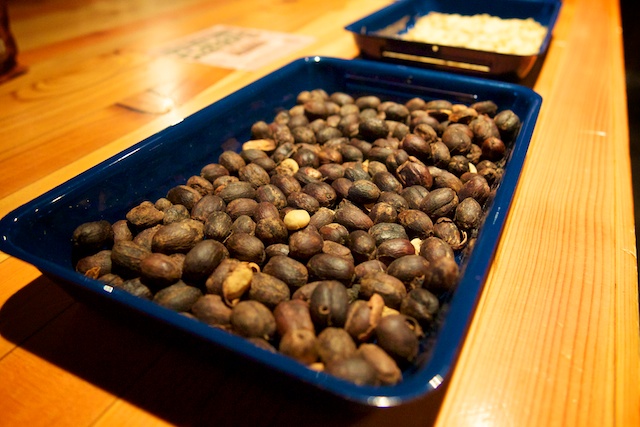
Natural processing (sometimes referred to as dry processing) is one of the oldest and most traditional ways to process coffee. Whole coffee cherries are dried on a raised bed or patio with full exposure to the sun for approximately 10 to 14 days. This allows the coffee cherry’s fruity flavour to seep into the green coffee bean inside. Once the coffee cherry is dry, it is processed gently to remove the dry fruit casing from the coffee bean. The result is a beautiful green coffee bean with intense fruit flavour given to it naturally by the fruit in the heat of the sun. Today, natural processing is usually applied in Ethiopia and Brazil, because the modern machinery and water involved in the washed process can be scarce in these two coffee-growing regions. Naturally processed coffee tends to produce a sweeter, fruitier cup than washed coffee. The demand for naturally processed coffee is on the rise so we’re starting to see some Latin American countries, which are traditionally ‘washed’ coffee countries, produce some very beautiful and unique naturals.
Just a few months ago John and I were standing among coffee trees on Maui, picking coffee cherries and learning about the growing process. Now I knew much more about the next steps.
Not sure whether your coffee beans are processed washed or natural? Stamatis said to ask your local barista and they’ll know. There was a noticeable difference between the Ethiopia Amaro Gayo Natural and the coffee that I usually drink (that is more similar to the Sumatra Dark Roast). We sniffed the ground up Amaro Gayo beans beforehand and it was almost like a tea. In the cup, it was very light with hints of berries and citrus.
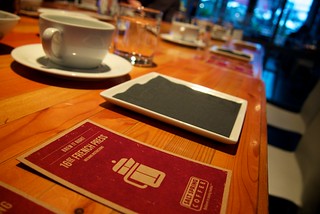
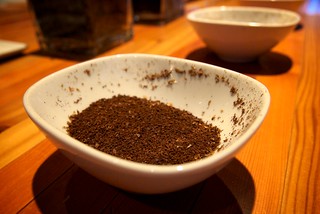
Kevin brewed the coffee three different ways and we sampled each throughout the course of the event. The first was Pour-Over using Hario Ceramic Coffee Drippers. The second was with a Chemex Coffeemaker which appears to double as a wine decanter (and could be the next item on my shopping list). Both of these methods included a paper filter and specific timing. We were given cheat-sheet cards near our place settings with step-by-step instructions for the pour-over method and the last one, French Press.
At home we use a French Press the most but it was incredible to see the difference in our cups when compared to pour-over and Chemex brewing. The coffees that went through the drippers and the Chemex had less acidity than the French Press, you could even see more oils in the French Press cup. Not that it was a bad thing, but it was interesting to compare and see — and taste — those differences.
The final stage of the event was a Salt Spring Coffee inspired cocktail prepared by the barmen from Edible Canada. Coffee-infused vodka was prepared before our eyes as was Irish Cream since at Edible Canada, every ingredient is from Canada. There are no Irish Creams made around here so it was made from scratch, blended, shaken with Whiskey, rimmed with caramel and sea salt, and served up with a sprinkle of coffee beans on top. By the end of the session we had cups of coffee, a cocktail, and some freshly made chocolate oatmeal cookies that were delivered to us from the kitchen – it was a lovely experience. The session itself was only $20 to attend and ran 90 minutes.
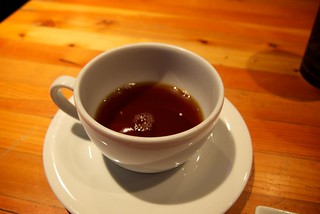
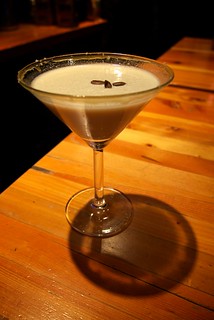
Today’s Chocolate Chocolate Chocolate event is sold out but last I heard, there was still room in tomorrow night’s Wine VS Beer, Which is Better With Cheese seminar. That talk starts at 3:30pm and is $30 (plus applicable taxes) and will run for 90 minutes. Follow Edible Canada on Twitter and Facebook to learn more about the restaurant and shop, as well as their tours, workshops and seminars.
Reminder: Until the end of Dine Out Vancouver on February 3, 2013, festival-goers can enter the American Express Canada #DineWithAmex contest on Facebook for the chance to win one of ten $100 American Express Gift Cards. Simply Instagram your Dine Out meals and upload them with the hashtag #DineWithAmex then visit DineWithAmex.ca to find the URL of your Instagram photo and submit your food photo entry. You can enter up to three times between January 18th and February 3rd for a chance to win.

